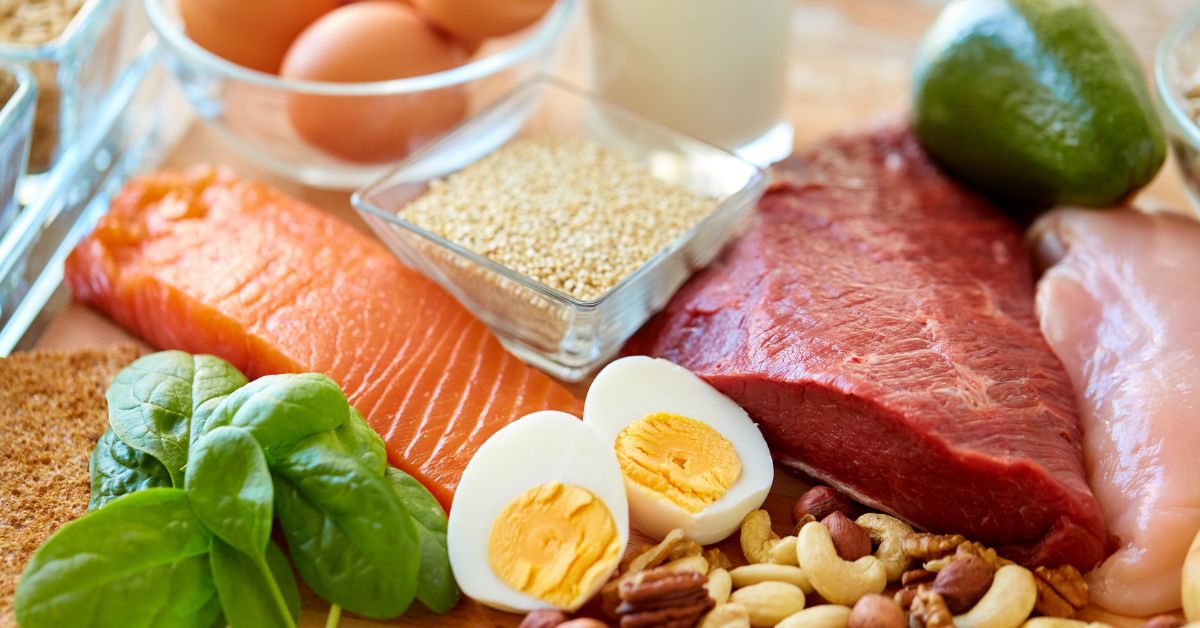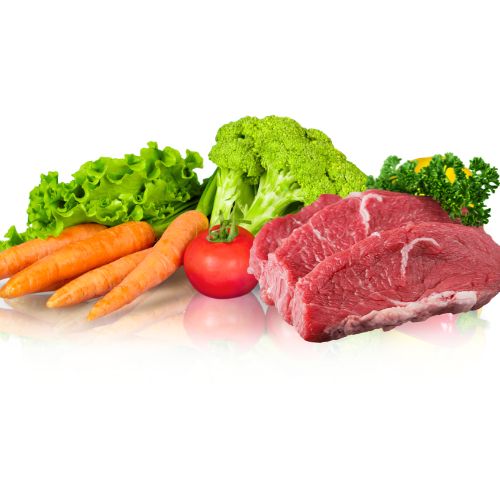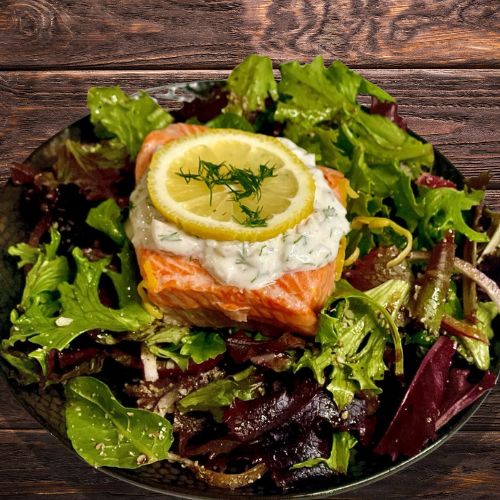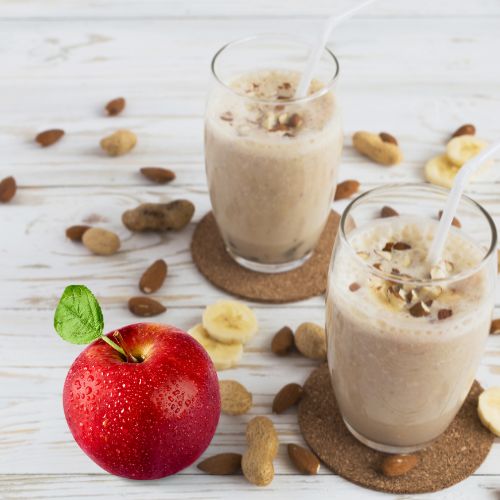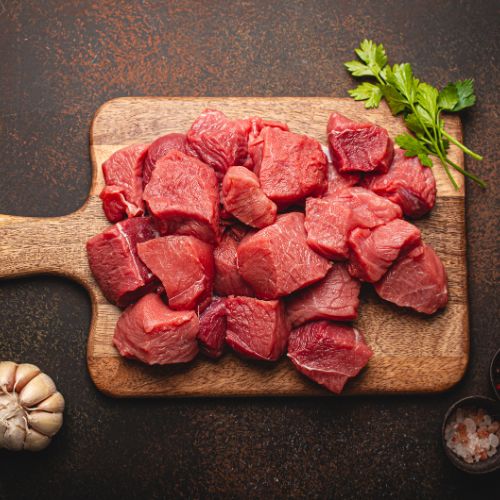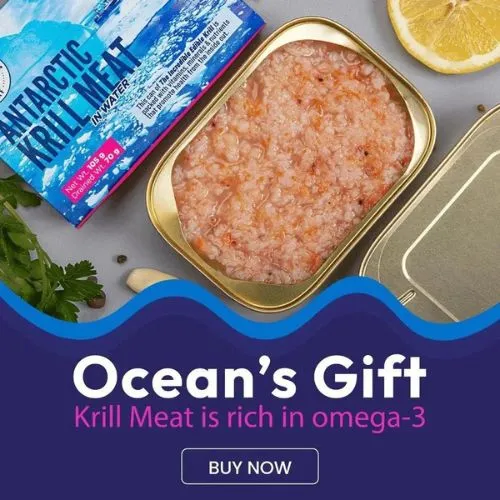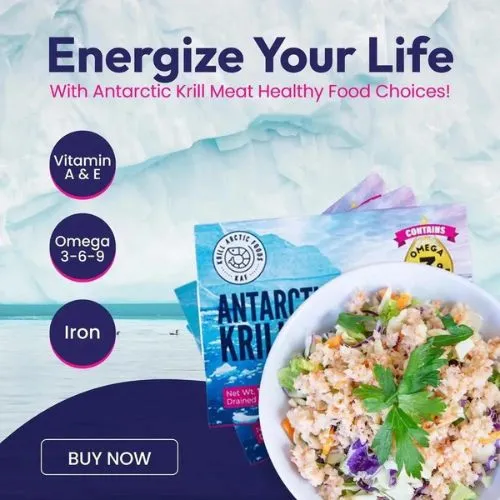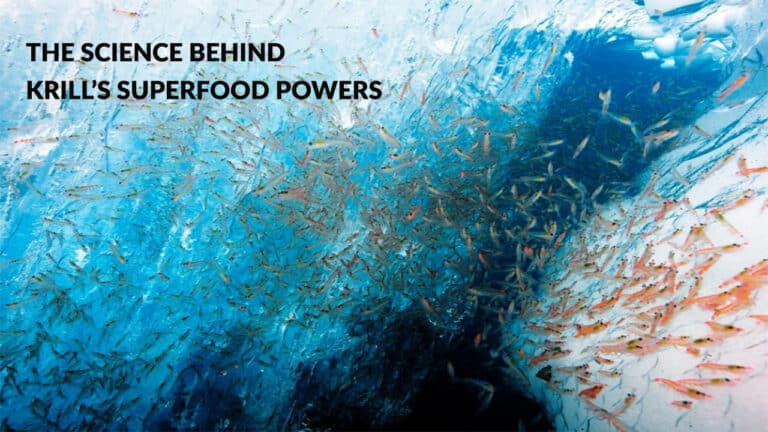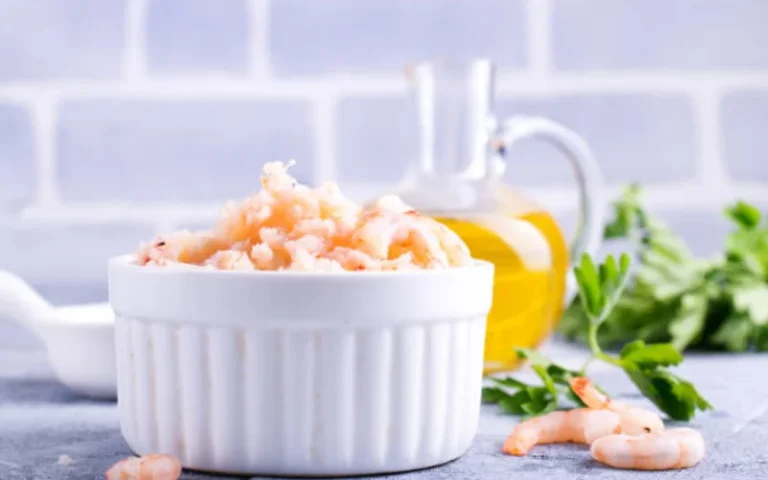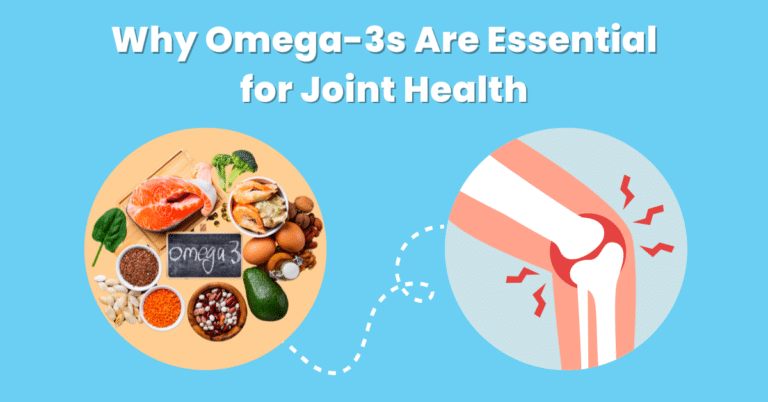Imagine starting your day feeling satisfied and energized—no midday cravings, no constant thoughts about food, just steady energy. That’s the impact a high-protein diet can have, especially if you’re aiming to lose weight without sacrificing muscle or vitality. Protein is more than just a building block for muscles; it’s a powerful tool for weight management. Studies show that diets high in protein can boost metabolism by up to 15–30%, helping your body burn more calories throughout the day. And because protein keeps you feeling full longer, it can help reduce those urges to snack on high-calorie foods, making it easier to stay on track.
But if you’re wondering how to build a high-protein diet that’s both satisfying and balanced, or struggling to find a meal plan that keeps things fresh and interesting without unnecessary carbs or fats, this guide is for you. With a focus on lean and pure protein sources, I’ll show you how a 7-day protein diet can deliver real results without feeling like a chore. You won’t just be sticking to any diet—you’ll have a structured, easy-to-follow plan that takes the guesswork out of your meals.
So, let’s dive to explore a practical 7-day meal plan that’s simple, nutritious, and packed with delicious, protein-rich meals.
Why Protein is Essential in a Weight Loss Diet
If you’ve ever struggled with constant hunger on a diet or felt like your energy levels were dipping, you’re not alone. This is where protein comes in as a game-changer for weight loss. Protein helps curb those cravings by keeping you fuller for longer, so you’re less likely to reach for a snack. When we eat protein, our bodies take longer to digest it, releasing energy slowly and reducing those familiar hunger pangs.
Beyond curbing hunger, protein helps to retain muscle while shedding fat. Losing weight doesn’t just mean losing fat—without enough protein, you risk losing muscle too. By incorporating enough lean protein, you’re ensuring your body has what it needs to preserve muscle, which helps maintain strength and a toned appearance even as you slim down. Plus, lean protein sources are naturally lower in fat, keeping calories manageable without sacrificing flavor or satisfaction.
And here’s a surprising bonus: protein actually makes your body work harder to digest it. This process, called the thermic effect, means you burn more calories just breaking down protein than you would with fats or carbs. It’s like giving your metabolism a little extra boost, which can add up over time and help with weight loss.
For these reasons, a high-protein diet that includes lean, low-fat options like chicken, fish, and plant-based proteins can be an effective and sustainable approach to weight loss. These protein sources keep calories under control while delivering the nutrients you need to succeed.
What to Expect from a 7-Day Protein Diet Plan
Starting a 7-day protein diet can bring noticeable changes in just one week. While this isn’t a quick-fix solution, here’s what you can expect to feel by the end of the week:
- Steady Energy Levels
Protein offers a slower, more sustained release of energy than carbs, helping to keep blood sugar levels stable. By the end of the week, many people report feeling more energized throughout the day, without those familiar midday slumps or crashes. - Reduced Hunger and Fewer Cravings
Protein is naturally filling, making it easier to manage hunger and avoid unplanned snacking. This can help you feel satisfied longer after each meal, keeping your calorie intake in check without feeling deprived. - Gradual Weight Loss
While significant weight loss takes time, a high-protein diet can help jumpstart the process. This week, you may experience a small drop in weight due to reduced water retention and the body’s natural fat-burning processes. Many people notice a lighter feeling or a small change on the scale, which can be a great motivator. - Improved Muscle Support
Protein is essential for preserving muscle mass, especially during weight loss. This diet is designed to provide enough protein to protect your muscles as you cut calories, ensuring that you’re more likely to lose fat rather than muscle. - Better Control Over Eating Habits
A structured, high-protein plan encourages mindful eating habits. By following this approach, you’ll begin to notice improvements in portion control and better awareness of your food choices, making it easier to stay on track with healthy eating.
These short-term effects make a high-protein diet an effective and approachable way to begin working toward your weight loss and energy goals.
Sample 7-Day Protein Diet Plan for Weight Loss
This 7-day high-protein diet is designed to keep you satisfied with every meal while staying within a calorie range that supports weight loss. With a variety of lean, pure proteins and balanced portions, this plan provides essential nutrients without excess calories, helping you stay full, energized, and focused on your goals.
Day 1: Lean Meats and Vegetables
- Breakfast: (Scrambled eggs with veggies)
- Ingredients: 3 eggs, a handful of spinach, cherry tomatoes, diced onions
- Preparation: Sauté spinach, cherry tomatoes, and onions in a teaspoon of olive oil until softened. Add beaten eggs and cook until scrambled. Season with salt, pepper, and a sprinkle of fresh parsley or chives for extra flavor.
- Snack: (Greek yogurt berry bowl)
- Ingredients: 1 cup of unsweetened Greek yogurt, a handful of fresh blueberries, a few sliced strawberries, and a sprinkle of chia seeds
- Preparation: Combine Greek yogurt with berries and top with chia seeds for a nutritious, filling snack.
- Lunch: (Grilled chicken salad)
- Ingredients: 150g grilled chicken breast, mixed greens (arugula, romaine, spinach), sliced cucumber, bell peppers, shredded carrots
- Dressing: Light vinaigrette made from olive oil, lemon juice, and a dash of mustard
- Preparation: Place mixed greens, cucumber, bell peppers, and carrots in a bowl. Top with sliced grilled chicken breast and drizzle with the vinaigrette for a refreshing, high-protein lunch.
- Dinner: (Italian-style turkey meatballs with steamed vegetables)
- Ingredients: 150g lean ground turkey, minced garlic, Italian herbs, steamed broccoli, cauliflower
- Toppings: Sprinkle of grated Parmesan cheese and fresh basil (optional)
- Preparation: Mix ground turkey with garlic and Italian herbs, form into meatballs, and bake until cooked through. Serve with steamed broccoli and cauliflower, and garnish with Parmesan and basil for added flavor.
Day 2: Fish, Greek Yogurt, and Leafy Greens
- Breakfast: (Greek yogurt parfait)
- Ingredients: 1 cup unsweetened Greek yogurt, a handful of sliced strawberries, 1 teaspoon chia seeds, drizzle of honey.
- Preparation: Layer Greek yogurt in a bowl or glass, top with sliced strawberries, sprinkle with chia seeds, and finish with a light drizzle of honey for a touch of sweetness.
- Snack: (Cottage cheese and cherry tomatoes)
- Ingredients: ½ cup cottage cheese, a few cherry tomatoes
- Preparation: Serve cottage cheese in a bowl alongside cherry tomatoes. Add a pinch of black pepper or fresh basil if desired for extra flavor.
- Lunch: (Grilled salmon salad with greens and avocado)
- Ingredients: 150g salmon fillet, mixed greens (arugula, kale), ¼ sliced avocado
- Dressing: Light drizzle of olive oil and lemon juice
- Preparation: Grill the salmon fillet until cooked through. Serve on a bed of mixed greens, add avocado slices, and drizzle lightly with olive oil and lemon juice for a fresh, nutrient-packed meal.
- Dinner: (Baked cod with sautéed spinach)
- Ingredients: 150g cod fillet, 1 cup fresh spinach, minced garlic, lemon juice
- Preparation: Bake cod until tender, seasoning lightly with salt and pepper. Sauté spinach with minced garlic in a teaspoon of olive oil. Serve the cod alongside the spinach, adding a squeeze of lemon juice over both for brightness.
Day 3: Plant-Based Protein Day
- Breakfast:
Almond milk smoothie- Ingredients: 1 cup almond milk, 1 scoop plant-based protein powder, a handful of spinach, ½ cup frozen berries
- Preparation: Blend almond milk, protein powder, spinach, and frozen berries until smooth. This refreshing smoothie is a great, nutrient-packed start to the day.
- Snack:
Almonds and apple- Ingredients: 1 small apple, handful of almonds (about 10-12)
- Preparation: Serve a small apple alongside a handful of almonds for a simple, satisfying snack.
- Lunch:
Tofu vegetable stir-fry- Ingredients: 150g tofu (firm, cubed), ½ bell pepper (sliced), ½ cup broccoli florets, ½ zucchini (sliced), dash of low-sodium soy sauce
- Preparation: Sauté tofu in a non-stick pan until golden. Add bell peppers, broccoli, and zucchini, and cook until vegetables are tender-crisp. Add a dash of low-sodium soy sauce to finish, stirring to coat evenly.
- Dinner:
Hearty lentil soup and mixed green salad- Ingredients: 1 cup cooked lentils, ½ cup chopped carrots, ½ cup chopped celery, ½ cup diced onion, mixed greens (for side salad)
- Preparation: In a pot, combine lentils, carrots, celery, and onion. Simmer with water or vegetable broth until vegetables are tender. Serve with a side salad of mixed greens, lightly dressed with olive oil and balsamic vinegar.
Day 4: High-Protein Breakfast Focus
- Breakfast: (Overnight oats with Greek yogurt and raspberries)
- Ingredients: ½ cup rolled oats, ½ cup Greek yogurt, ½ cup almond or milk of choice, 1 tablespoon chia seeds, handful of fresh raspberries
- Preparation: In a jar, combine oats, Greek yogurt, almond milk, and chia seeds. Stir well, cover, and refrigerate overnight. In the morning, top with fresh raspberries for a creamy, high-protein start to your day.
- Snack: (Cucumber slices with hummus)
- Ingredients: 1 cucumber (sliced), 2 tablespoons hummus
- Preparation: Slice cucumber into rounds and serve with hummus for a refreshing, protein-rich snack.
- Lunch: (Grilled chicken Caesar salad)
- Ingredients: 150g grilled chicken breast, romaine lettuce (chopped), 1 tablespoon grated Parmesan cheese, 1–2 tablespoons light Caesar dressing
- Preparation: Place romaine lettuce in a bowl, top with grilled chicken slices and Parmesan cheese. Drizzle with light Caesar dressing, toss to coat, and enjoy this satisfying, high-protein lunch. Note: Skip croutons to keep it light and low in carbs.
- Dinner: (Stir-fried shrimp with mixed vegetables)
- Ingredients: 150g shrimp (peeled), ½ cup snap peas, ½ cup sliced carrots, ½ bell pepper (sliced), 1 teaspoon olive oil, dash of salt and pepper
- Preparation: In a skillet, heat olive oil and add shrimp. Cook until pink and cooked through, then add snap peas, carrots, and bell pepper. Stir-fry until vegetables are tender-crisp, seasoning with a pinch of salt and pepper.
Day 5: Light and Pure Protein Options
- Breakfast: (Scrambled egg whites with sautéed mushrooms)
- Ingredients: 4 egg whites, ½ cup sliced mushrooms, 1 teaspoon olive oil, fresh herbs (like parsley or chives), pinch of salt and pepper
- Preparation: In a non-stick skillet, heat olive oil and sauté mushrooms until tender. Add egg whites, scramble until cooked through, and season with salt, pepper, and a sprinkle of fresh herbs for extra flavor.
- Snack: (Cottage cheese with apple slices and cinnamon)
- Ingredients: ½ cup cottage cheese, 1 small apple (sliced), sprinkle of cinnamon
- Preparation: Place cottage cheese in a bowl, top with apple slices, and sprinkle with cinnamon for a naturally sweet and protein-packed snack.
- Lunch: (Grilled turkey burger with cucumber and cherry tomato salad)
- Ingredients: 1 turkey burger patty (150g, lean ground turkey), ½ cucumber (sliced), a handful of cherry tomatoes, 1 teaspoon olive oil, dash of salt and pepper
- Preparation: Grill the turkey patty until fully cooked. Serve with a side of sliced cucumber and cherry tomatoes, drizzled with olive oil and lightly seasoned with salt and pepper for a simple, refreshing side salad.
- Dinner: (Baked chicken breast with roasted Brussels sprouts and steamed asparagus)
- Ingredients: 150g chicken breast, ½ cup Brussels sprouts (halved), ½ cup asparagus spears, 1 teaspoon olive oil, pinch of salt, pepper, and garlic powder (optional)
- Preparation: Preheat oven to 400°F (200°C). Season chicken breast with salt, pepper, and garlic powder if desired, and bake until cooked through. Toss Brussels sprouts with olive oil, salt, and pepper, then roast in the oven until crispy. Steam asparagus until tender. Serve all together for a light, protein-packed dinner.
Day 6: Dairy and Lean Cuts
- Breakfast: (Greek yogurt bowl with banana and walnuts)
- Ingredients: 1 cup Greek yogurt (unsweetened), 1 small banana (sliced), a few walnut halves
- Preparation: In a bowl, add Greek yogurt and top with banana slices and walnuts for a creamy, protein-rich start to the day.
- Snack: (Hard-boiled eggs)
- Ingredients: 2 hard-boiled eggs, pinch of salt and pepper
- Preparation: Slice hard-boiled eggs in half and sprinkle with salt and pepper to taste. A simple, protein-packed snack to keep you energized.
- Lunch: (Grilled lean beef steak with roasted sweet potatoes and green salad)
- Ingredients: 120g lean beef steak, ½ cup sweet potato (cubed), mixed greens (lettuce, arugula, spinach), 1 teaspoon olive oil, salt, pepper
- Preparation: Grill beef steak to preferred doneness and season with salt and pepper. Toss sweet potato cubes with a bit of olive oil, salt, and pepper, then roast in the oven at 400°F (200°C) until tender. Serve with a small side salad of mixed greens drizzled lightly with olive oil.
- Dinner: (Cottage cheese bowl with cucumber, cherry tomatoes, and herbs)
- Ingredients: 1 cup low-fat cottage cheese, 1 cucumber (sliced), a handful of cherry tomatoes (halved), fresh herbs (such as parsley or dill), salt and pepper
- Preparation: In a bowl, add cottage cheese and top with sliced cucumber and cherry tomatoes. Sprinkle with fresh herbs, salt, and pepper to taste for a refreshing, light, and filling dinner.
Day 7: Mix of All Foods from the Week
- Breakfast: (Greek yogurt smoothie)
- Ingredients: ½ cup Greek yogurt, 1 cup almond milk, a handful of spinach, ½ cup mixed berries (fresh or frozen)
- Preparation: Blend Greek yogurt, almond milk, spinach, and berries until smooth. This refreshing smoothie combines protein with greens and antioxidants for a balanced start to the day.
- Snack: (Almonds and turkey slices)
- Ingredients: A handful of almonds (about 10-12), a few slices of turkey breast.
- Preparation: Serve almonds with turkey slices for a protein-rich, satisfying snack to keep you going until lunch.
- Lunch: (Grilled fish taco bowl)
- Ingredients: 150g tilapia (or other white fish), 1 cup shredded lettuce, ½ cup diced tomatoes, 1 tablespoon shredded cheese, wedge of lime.
- Preparation: Grill the tilapia until cooked through, then place over a bed of shredded lettuce and diced tomatoes. Sprinkle with shredded cheese and finish with a squeeze of lime for a flavorful taco-inspired bowl.
- Dinner: (Baked tofu with roasted mixed vegetables)
- Ingredients: 150g tofu (cubed), ½ zucchini (sliced), ½ bell pepper (sliced), ½ cup carrots (sliced), 1 teaspoon olive oil, drizzle of balsamic vinegar, salt, and pepper
- Preparation: Preheat oven to 400°F (200°C). Toss tofu and vegetables with olive oil, salt, and pepper. Spread on a baking sheet and roast until vegetables are tender and tofu is golden. Finish with a drizzle of balsamic vinegar before serving.
Variation for Highly Active Individuals
If you have a high level of physical activity, your body may need extra fuel to keep up. So, you should add one or two protein-rich snacks each day, such as:
- A hard-boiled egg with a handful of baby carrots.
- Cottage cheese (½ cup) with sliced cucumber.
- A handful of mixed nuts for healthy fats and extra protein.
This flexible, high-protein approach is designed to make each day of the week varied, satisfying, and easy to follow. Ready to jump in? Give it a try and experience how energizing and achievable a protein-centered diet can be.
Foods to Include in a High-Protein Diet Plan
Choosing the right high-protein foods can be the foundation of a successful diet plan, helping you stay full, energized, and on track with your goals. Here’s a guide to top protein sources that deliver high-quality nutrients without unnecessary sugars or fats.
1. Lean Proteins
Lean meats like chicken breast, fish, and lean cuts of beef or pork are excellent sources of protein. They offer high protein with minimal fat, making them ideal for supporting muscle retention while keeping calories low. Grilled chicken breast, baked fish, or lean beef in salads or main dishes are versatile ways to work them into your meals.
2. Plant-Based Options
For those who prefer plant-based proteins, foods like beans, lentils, tofu, and tempeh are nutrient-packed choices. These options not only provide protein but also add fiber, which promotes fullness and supports digestion. Try adding lentils to soups or tossing tofu into stir-fries to keep things interesting and balanced.
3. Dairy
Dairy products like Greek yogurt, low-fat cheese, and milk alternatives (like almond or soy milk) deliver protein along with essential vitamins and minerals. Greek yogurt, in particular, packs in high protein with fewer carbs, making it a great option for breakfast or snacks. Just be sure to choose varieties without added sugars for the best health benefits.
4. Pure Protein Snacks
When hunger hits between meals, reach for pure protein snacks like boiled eggs, cottage cheese, or a handful of nuts. These snacks are nutrient-dense, helping to curb cravings without overloading on calories. Cottage cheese or boiled eggs are easy to prepare and travel well, making them perfect for busy days.
Each of these options provides high-quality protein, but selecting whole foods with minimal processing is key. When you choose proteins that balance your macronutrient needs without added sugars or fats, you’re setting up a diet that’s both satisfying and sustainable.
Tips to Maximize Weight Loss with a Protein Diet Plan
If you’re looking to make the most of your high-protein diet plan for weight loss, a few small adjustments can make a big difference. Here are five practical tips to help you get the best results, without feeling deprived or overwhelmed.
1. Start with Protein at Every Meal
When you start your meal with protein, you’re more likely to feel full and satisfied, which can help you avoid overeating. Whether it’s eggs for breakfast, grilled chicken at lunch, or tofu at dinner, make protein the star of your plate. This approach keeps hunger in check and prevents cravings later in the day.
2. Incorporate Fiber-Rich Vegetables
While protein fills you up, fiber adds volume and helps with digestion, making meals more satisfying. Pair your protein sources with fiber-rich veggies like spinach, broccoli, and bell peppers. Not only does this add nutrients, but it also supports healthy digestion and makes it easier to stick with your diet plan.
3. Stay Hydrated
Drinking enough water is essential when you’re on a high-protein diet. Protein can have a dehydrating effect on the kidneys if you aren’t drinking enough water, so aim for at least 8–10 glasses daily. Staying hydrated helps keep your metabolism working efficiently and can also reduce hunger pangs, making it easier to stay on track.
4. Plan Protein-Rich Snacks
Avoid those high-calorie, sugary snacks by preparing simple, protein-rich options like Greek yogurt, cottage cheese, or a handful of almonds. Protein-packed snacks help bridge the gap between meals, keeping your energy levels stable and your hunger at bay. This way, you’re less likely to reach for something less healthy when you’re busy or on the go.
5. Get Enough Sleep and Manage Stress
Sleep and stress might not seem directly related to diet, but both have a significant impact on weight loss. Poor sleep and high stress can lead to cravings for sugary or high-carb foods. Aim for 7–8 hours of sleep and find ways to manage stress, such as walking, meditation, or deep breathing. A well-rested body is better equipped to stick to your protein diet and reach your goals.
Benefits of Following a 7-Day Protein Diet Plan
Beyond the first week, sticking to a high-protein diet has lasting benefits for those committed to a healthier lifestyle. Here are the long-term advantages of making protein a core part of your diet:
1. Consistent Weight Management
High-protein diets are proven to support long-term weight control. By helping you feel full longer and naturally reducing calorie intake, a protein-rich approach makes it easier to maintain a healthy weight without constant hunger or cravings.
2. Sustained Energy and Focus
Unlike quick-digesting carbs, protein keeps blood sugar steady and supports sustained energy throughout the day. Over time, you’ll feel more mentally and physically balanced, with fewer energy spikes and crashes, leading to improved productivity and focus.
3. Healthy Muscle Maintenance
Maintaining muscle mass becomes more challenging with age or calorie restriction. A protein-rich diet is crucial for long-term muscle health, helping to preserve strength and support metabolism. This makes a protein-focused approach especially beneficial for staying active and strong over time.
4. Improved Metabolic Health
Protein’s thermic effect (the energy used in digestion) can contribute to a healthy metabolism, helping your body burn calories more efficiently. Regularly including protein-rich foods in your diet can support a robust metabolic rate, making it easier to maintain your weight goals.
5. Lasting Healthy Eating Habits
A high-protein diet encourages mindful eating, portion control, and a focus on whole foods. These habits can help you make healthier choices in the long term, supporting a balanced, nutritious diet that feels sustainable and rewarding.
Adopting a high-protein diet offers benefits well beyond the first week, providing a pathway to healthier eating and sustained weight control. Try incorporating more protein long-term to experience these ongoing positive changes in your health and energy.
Common Mistakes to Avoid on a High Protein Diet
A high-protein diet can be an effective way to manage weight and support muscle health, but there are some pitfalls to watch out for. Here are five common mistakes people make and how to avoid them:
1. Overloading on High-Fat Proteins
Choosing protein sources that are high in saturated fats, like fatty cuts of meat, processed meats, or full-fat dairy, can lead to excess calorie intake and impact heart health. Instead, opt for lean proteins like chicken breast, fish, Greek yogurt, or plant-based proteins. These options keep calories and fats low while still providing the protein you need.
2. Neglecting Fruits and Vegetables
It’s easy to focus solely on protein and overlook fiber-rich foods like fruits and vegetables, which are crucial for digestion and overall health. Make sure to fill half of your plate with colorful vegetables or add a small portion of fruit to each meal to support a balanced diet.
3. Not Drinking Enough Water
Protein metabolism can increase your body’s need for water, so hydration is especially important on a high-protein diet. Without enough water, you may experience dehydration, digestive issues, or even strain on your kidneys. Aim for at least 8–10 glasses a day, and consider carrying a water bottle to keep up with your hydration needs.
4. Relying Too Much on Processed Protein Products
Protein bars, shakes, and other processed protein products can be convenient but often contain added sugars, artificial ingredients, or unhealthy fats. While they can be helpful in a pinch, whole food sources like eggs, nuts, beans, and lean meats provide more balanced nutrition. Reserve processed products for occasional use, and focus on fresh, whole foods whenever possible.
5. Ignoring Portion Sizes
Just because protein is healthy doesn’t mean more is always better. Eating excessive protein can add extra calories, which may hinder weight loss goals or lead to weight gain over time. Stick to recommended portion sizes—about 20–30 grams of protein per meal—and balance your plate with healthy fats and fiber-rich foods.
Avoiding these common mistakes can help you maximize the benefits of a high-protein diet without compromising your health. By choosing lean proteins, staying hydrated, and balancing your meals, you’ll be on the right track to enjoy a more effective and sustainable diet plan.
Conclusion: Start Your 7-Day Protein Diet Plan
Taking on a 7-day high-protein diet can be an empowering start toward healthier habits. With carefully balanced meals that keep you full and energized, this plan simplifies weight loss while supporting your energy and muscle health. By focusing on lean proteins and nutrient-dense foods, you’re setting up a week that not only jumpstarts your goals but also introduces sustainable, healthy eating habits.
Ready to give it a try? Take on this plan, Each meal in this plan is crafted to make eating enjoyable and nutritious, helping you experience how a protein-rich diet can be both practical and satisfying. Here’s to a week of positive changes and setting the foundation for a healthier lifestyle!


